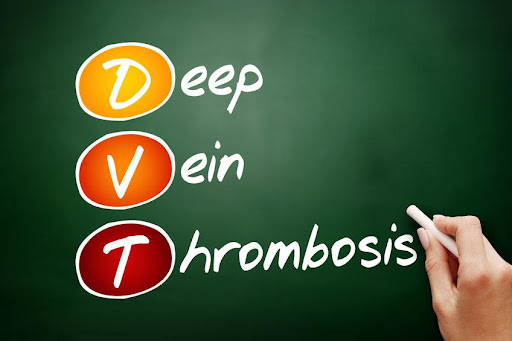
Understanding Deep-Vein Thrombosis
According to the Centers for Disease Control and Prevention, nearly 1 million Americans develop deep-vein thrombosis each year. It's a potentially fatal condition that can also contribute to long-term complications with age.
March is Deep-Vein Thrombosis (DVT) Awareness Month. This public health initiative aims to educate more individuals about DVT to increase awareness of the signs, symptoms, and personal risk factors.
What is Deep-Vein Thrombosis?
DVT is more commonly known as blood clots, specifically in deep veins, usually within the leg. DVT can cause swelling, discoloration, and pain in the affected area. If left untreated, the blood clot can get loose and travel through the bloodstream to other parts of the body, such as the lungs. Depending on where the blood clot goes, it can cut off blood flow and cause a pulmonary embolism. A pulmonary embolism is a life-threatening complication that can cause shortness of breath, chest pains, dizziness, fainting, increased heart rate, or coughing up blood. It's vital to see a medical professional if you experience any signs or symptoms of DVT or a pulmonary embolism.
Anything that interferes with the natural flow of blood through the body or blood's ability to clot can lead to DVT. This can include damage or infection to a vein. Anyone is at risk for developing DVT, although it's most common in individuals 60 and older. DTV is also common in seniors on bed rest or who have paralysis because when the body remains still for an extended time, the blood doesn't circulate properly, causing the formation of blood clots. Additional risk factors include obesity, smoking, heart failure, certain cancers, or a family history of DVT.
Treating Deep-Vein Thrombosis
If you're diagnosed with DVT, usually your doctor will suggest treatment to prevent the blood clot from growing or breaking loose. The most common treatment is the prescription of blood thinners to keep blot clots from growing and keep additional clots from forming. Blood thinners are administered orally or through an IV injection, depending on the blood thinner type.
For severe cases of DVT, you may have to take medications called clot busters. Doctors administer clot busters through an IV or catheter. For people who can't take medications, medical professionals can insert a filter into the vein in your abdomen that prevents blood clots from traveling into the lungs.
If your blood clot is large, your doctor may perform a surgical thrombectomy. This surgery is minimally invasive and prevents pulmonary embolism. The doctor injects a dye to locate the blood clot and inserts a catheter through a vein to the location of the blood clot. From there, the doctor can extract fragments of the blood clot.
A nonmedical option that can help with DVT is compression socks. Compression socks can prevent swelling and allow blood to circulate to not clot. You can find compression socks at most pharmacies or talk to your doctor about their recommended brands and styles.
Working with Visiting Angels
If you're a senior living with DVT or another disorder that makes it challenging to care for yourself, the team at Visiting Angels can help. Our professional caregivers assist with nonmedical tasks such as medication reminders, mobility assistance, light housekeeping, meal preparation, personal grooming, and transportation. Our Northeast Ohio office serves those in Lake, Geauga, and Northeast Cuyahoga counties. If you'd like to learn more about our services, you can call our office at 440.974.0869 or complete this online form.
